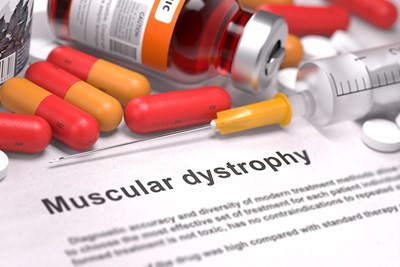Certain proteins are necessary in order for our muscles to function normally. When the genes that produce these proteins become mutated, this leads to increased damage and weakness in the muscles over time. This condition is referred to as muscular dystrophy. Unfortunately, there is currently no cure for muscular dystrophy. However, there are several different treatment options that can help to prevent or reduce some of the symptoms of this disease and allow individuals with muscular dystrophy to remain mobile and active for as long as possible.
Medications
The most commonly prescribed medications for muscular dystrophy include:
- Corticosteroids: Medications such as prednisone can help to improve your muscle strength and delay the progression of certain types of muscular dystrophy. However, long-term use of corticosteroids can lead to weight gain and weakened bones, which can increase your risk for fractures.
- Heart medications: Certain types of muscular dystrophy can also cause damage to your heart and lung muscles, which can lead to trouble breathing and heart conditions. If muscular dystrophy is causing damage to your heart, you may also need to take medications for this as well. Some commonly prescribed medications include ACE (angiotensin-converting enzyme) inhibitors and beta blockers.
Physical Therapy
There are several different types of therapy that can improve the quality of life for individuals with muscular dystrophy. These include:
- Exercise: Some types of exercise can help to maintain strength, mobility, and general health for someone with muscular dystrophy. This usually includes low-impact aerobic exercises, such as walking or swimming. However, some types of exercises may be potentially harmful for some types of muscular dystrophy, so always be sure to talk to your doctor before starting a new exercise regimen.
- Stretching: Since muscular dystrophy can also cause restriction in the flexibility and mobility of your joints, it is common for limbs to draw inward and become fixed in that position. This is why stretching and range-of-motion exercises can be helpful for keeping your joints as flexible as possible.
Assistive Devices
There are also many assistive devices that are available for individuals with muscular dystrophy that can help to improve the quality of life. These include:
- Braces: Braces are useful for keeping your muscles and tendons stretched and flexible, which will slow the progression of contractures. Additionally, braces can help to increase mobility by supporting weakened muscles.
- Mobility aids: Most people with muscular dystrophy will end up relying on a wheelchair at some point. However, the use of canes and walkers can help to prolong this and maintain mobility and independence for as long as possible.
- Breathing assistance: During the later stages of severe muscular dystrophy, the respiratory muscles will also begin to weaken and deteriorate. If this happens, you may need a sleep apnea device to help improve oxygen delivery during the night. Some people will also need to use a ventilator, which forces air in and out of the lungs when the lungs are no longer able to breathe on their own.
Surgery
If a condition such as a spinal curvature is causing breathing to be more difficult, then you may need corrective surgery to fix this problem.



